E-Commerce Checkout Optimization Guide
İpek Aktaş
How long does it take you to send a text or to FaceTime someone? Maybe to find the info you’re hunting down on the web? It’s likely just a few fleeting moments, right? That’s about the span of patience most of us have these days. Now, why should this matter to you, especially in the e-commerce sphere? Because, believe it or not, this same blink-and-you-miss-it timeframe is exactly what customers expect from their online shopping experience—right down to the checkout process. With the average cart abandonment rate hovering around a staggering 70%, the stakes couldn’t be higher. In this article, we’re covering why optimizing your checkout process is not just important but critical and how mastering this can dramatically elevate your customer’s experience and your sales.

Why Is E-Commerce Checkout Optimization Essential?
For e-commerce businesses, checkout optimization is essential since it directly impacts the success of an online store and can improve the overall shopping experience for customers. But why?
Why? Because there’s a direct connection between the checkout page and the conversion rate.

A good shopping experience should be topped with a good checkout experience, which includes every step a customer follows in your store to buy a product. The process includes;
- Putting billing info and shipping info
- Selecting a payment method
- Completing the transaction
- Confirming the order
Your overall checkout experience is the key to driving customers down to the sales funnel – driving conversions, revenue, and loyalty.
Picture your checkout experience as a slide. The smoother and quicker the slide, the faster customers reach the bottom, leading to conversions, revenue, and loyalty.
Any friction or difficulties at the final step of the customer journey, the checkout page, might lead to cart abandonment, resulting in lost sales.
If you optimize the checkout process and make it smooth, intuitive, and efficient, you can increase the chances of converting potential customers into actual buyers.
A user-friendly and mobile-responsive checkout experience enhances all types of positive customer interactions. It also fosters satisfaction and loyalty.
The more reliable your checkout is, the more trust your customers will have.
Let’s not forget to seize every opportunity to advance in the competitive e-commerce market!
Common Challenges in the E-Commerce Checkout Process
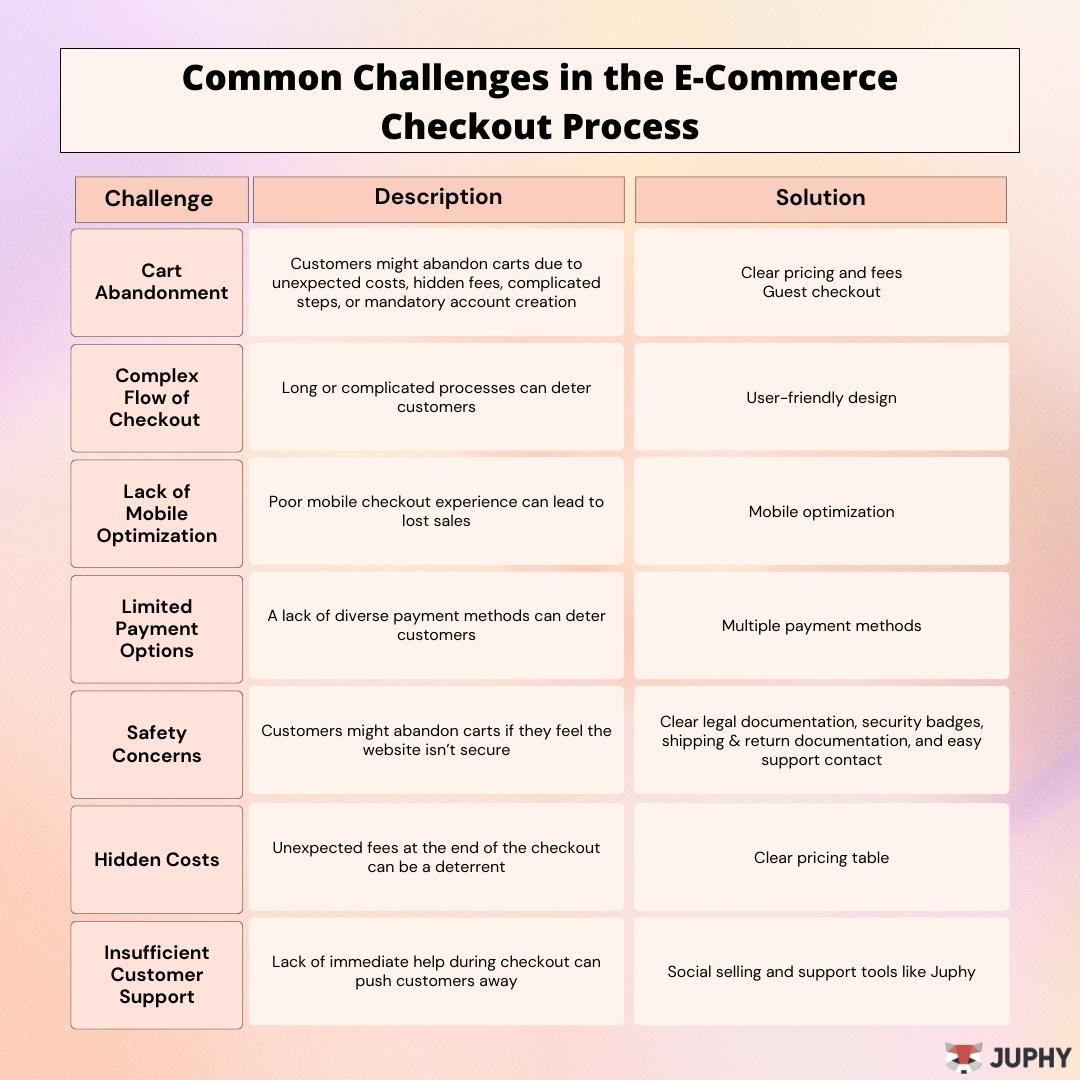
The e-commerce checkout process can be riddled with various challenges that may hinder a smooth and seamless shopping experience for customers. Here are some common challenges faced by businesses in the e-commerce checkout process:
Cart Abandonment
Unfortunately, customers might abandon their carts for reasons like unexpected shipping costs, hidden fees, complicated checkout steps, or the requirement to create an account before making a purchase!
* According to a study conducted by Baymard Institute, the average online shopping cart abandonment rate is approximately 70.19%. This number highlights the challenges e-commerce businesses face in streamlining the checkout process.

Learn all the tips, tricks, insights, and strategies to reduce your e-commerce store’s cart abandonment rates. Read more now!
Complex Flow of Checkout
If your checkout process is long or complicated, there is a high chance that your customers might be bored or frustrated and abandon their carts. The checkout process should not involve too many steps or require redundant information.
* 26% of users have abandoned a cart due to a checkout process that is too long or complicated.
Lack of Mobile Optimization
With the increasing number of shoppers using mobile devices, having a non-responsive or poorly optimized mobile checkout experience might result in lost sales. Navigating the checkout page on smaller screens should not be hard or complex.
* Mobile cart abandonment rates have been traditionally higher than desktop, underscoring the importance of optimizing for mobile. The difference can be up to 10% higher on mobile devices.
Limited Payment Options
Not everyone has many payment methods. Providing limited payment options can be a barrier for some customers. If your online store doesn’t offer safe and preferred payment methods, customers may abandon their carts and find elsewhere to shop.

Did you know 59% of Gen Z won’t checkout without an online payment option? They’re not just shopping; they’re leading a digital payment revolution! 👾🛍️
Shopify is ahead of the curve, offering everything from PayPal to crypto.
Safety Concerns
Though people are getting used to online shopping, security concerns remain for most. Customers are often wary of sharing sensitive information online, such as credit card details and personal data. If an e-commerce site lacks proper security measures and trust signals, it can create doubts in the customers’ minds, leading to cart abandonment.
Hidden Costs
Unexpected additional costs, such as shipping fees and taxes, can surprise shoppers. If these charges appear only in the later stages of the checkout process, it can lead to a negative shopping experience and deter purchases.
* 49% of shoppers abandon carts because of extra costs that are too high (like shipping, tax, or other fees), as per a study by Statista.
Lack of Guest Checkout Option
Not all people are willing to create an account to make a purchase from an online store. This can be inconvenient and time-consuming for most people, and offering a guest checkout option can significantly reduce friction and encourage more spontaneous purchases.
* Again, according to Baymard, 34% of shoppers abandon their carts when they are forced to create an account.
Insufficient Customer Support
If customers need help during the checkout process without immediate customer support, they might get angry and abandon their carts. Accessible and fast customer support is an essential part of online businesses.
In the following sections, we will explore strategies to overcome these challenges and create a successful e-commerce checkout process that enhances customer satisfaction and boosts sales.

Explore CSAT’s role in e-commerce success, its measurement techniques, and strategies to optimize customer satisfaction for sustained growth. Read more now!
Building a Streamlined E-commerce Checkout Process
Knowing the challenges is the first step to building a streamlined e-commerce checkout process. This checkout process can make or break the success of an e-commerce business.
Consumers demand a seamless and efficient experience that lets them quickly finalize their purchases without unnecessary hassles.
There are many things that you need to consider while building your purchase checkout, but to mention three main headlines;
User-Friendly Design
Actually, it is this simple. Your checkout process should be user-friendly!
Customers should find your interface quick, easy to navigate, and has clear and necessary instructions.
This way, businesses can guide through each step of the checkout process effortlessly.
A smooth interface is the key to having a strong and conversive online shopping process and enhancing the overall shopping experience.
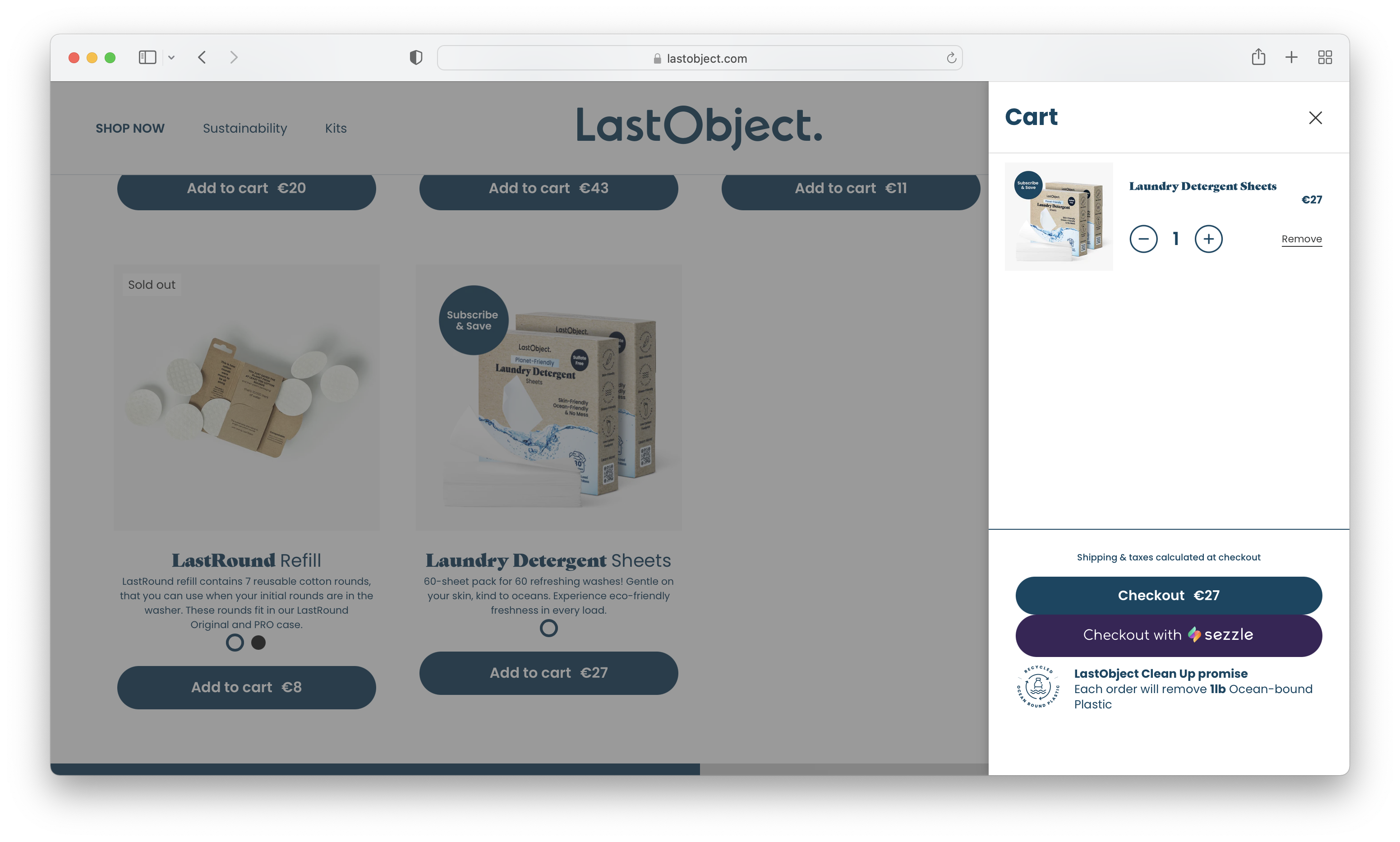
For example, mini carts, as in LastObject, are user-friendly designs that make it easy to double-check the order summary and support the transition to the checkout page.

Explore best practices for e-commerce website design to boost sales and build trust. Unlock your site’s potential with our insights! Read more now!
Mobile Optimization
Mobile shopping is becoming more common day by day, and optimizing the checkout process for mobile devices is no longer optional—it’s a must.
Mobile optimization ensures that customers can easily complete their purchases on smartphones and tablets without any problems.
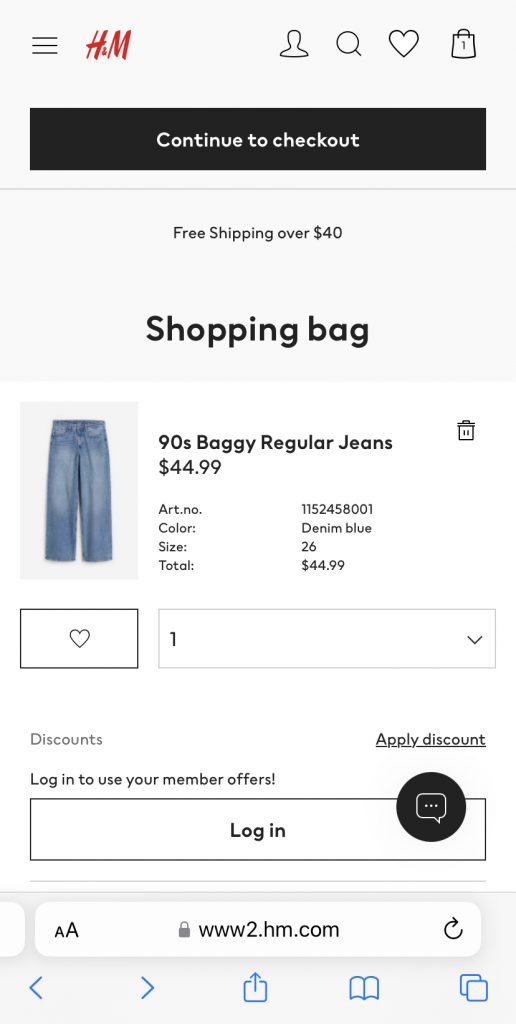
H&M’s mobile cart and checkout responsibility example
An easy-to-use design that adapts to different screen sizes and orientations is essential for capturing the growing market of mobile shoppers. We don’t want them to get frustrated and abandon their carts.
Implementing Guest Actions
Offering a guest checkout option is not only a convenient feature but also a very strategic move that makes the process much easier, especially for first-time shoppers and for people who don’t have or don’t prefer to have an account.
In today’s fast-paced world, consumers appreciate quick and uncomplicated checkout methods. Forcing the customer to create an account might deter potential sales.
This mandatory step can become a potential stumbling block, potentially making the shopper second-guess their decision or even prompting them to abandon their cart altogether.

By implementing guest checkout options or fast checkout options like Pini Parma does here, customers can purchase without the hassle of signing up.

A smooth and efficient guest checkout process fosters a positive impression of the brand and encourages repeat business in the future.
I mean, this favorable experience can be the difference between a one-time shopper and a loyal customer, inevitably encouraging repeat business in the future.
These are, of course, not the only points to consider, but in short, e-commerce stores can create a seamless and efficient checkout experience that delights customers and fosters long-term loyalty by having an interface that has minimized steps, diverse payment options, effective mobile optimization, and that ensures security.
The less effort your checkout process requires, the more people will be willing to buy from your business!
Reducing E-Commerce Cart Abandonment: Enhancing User Experience and Trust
Cart abandonment is the first thing you want to avoid in your e-commerce business. Think of cart abandonment as a leaky bucket. No matter how much water you pour in, if it’s leaking, you’re losing valuable resources.
Many online retailers struggle with this significant challenge since customers sometimes initiate the buying process by adding items to their virtual carts but often abandon their purchases midway, resulting in lost sales opportunities.
This is another important reason why your checkout process should foster trust and be smooth and seamless.
Clear Pricing and Shipping Information
Nobody likes to see unexpected payments at the last step.
One of the key factors driving cart abandonment is the lack of transparency in pricing and shipping information.
Customers want to see honest and straightforward information when making purchasing decisions.
That’s why, if you have an e-commerce business, you should prominently display the total cost of products, including taxes and shipping fees, as Marks & Spencer does here, on the checkout pages.
Hidden costs can lead to frustration and uncertainty, causing customers to rethink their purchases and ultimately abandon their carts.
If you are upfront about pricing and offer shipping options, customers can trust your business and follow through with their transactions.
Payment Options and Security
Unfortunately, cyber threats are on the rise, and this makes security one of the priorities.

To reduce cart abandonment, e-commerce websites must offer a wide range of secure payment options.
- Integrating reputable and well-known payment gateways can provide customers with peace of mind, knowing that their sensitive data is protected.
- Displaying security badges and showing reassuring messages during the checkout process can further reinforce trust and avoid hesitations that customers may have about sharing their personal and financial information.
Encouraging User Trust
Trust is very important if you want to turn potential customers into loyal ones.
One good way to do this is to show;
- reviews
- testimonials from past customers
Positive feedback from previous buyers can make new shoppers feel better about the company and its products because it shows that others have had good experiences with them.
Also, having clear legal documentation, a clear display of payment methods and contact information, or social chat widgets can help answer any questions or concerns quickly, making the whole shopping experience trustworthy.
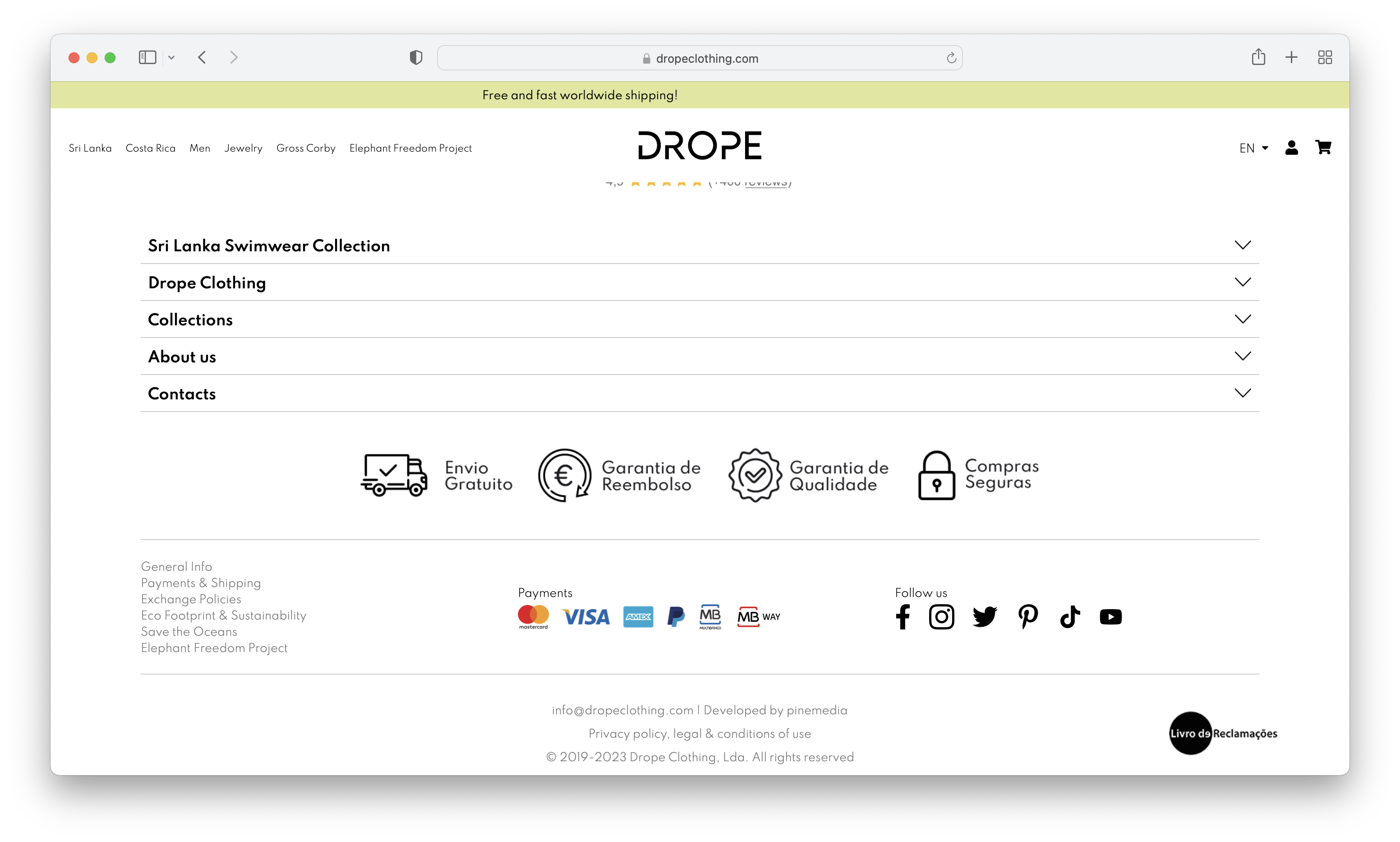
As Drope does here, provide legal documentation & return policies, contact information, clear delivery, and trust signals, such as well-known payment providers’ logos.
There are many ways to deal with e-commerce cart abandonment: businesses can make it easier for customers to complete transactions by putting clear pricing and shipping information at the top of their lists, offering secure payment options, and building trust through a reliable reputation and legal standing.
Reducing the number of carts that are left empty not only increases sales but also strengthens the brand’s relationship with its customers. This is important for long-term success in the competitive world of e-commerce.
Effective Use of Checkout Prompts and Upsells
In this day, when people have short attention spans (due to short TikTok videos), and the competition is never more than a mouse click away, it is important to make the most of every interaction you have with a customer.
One way to reach this goal is to take advantage of the chances that upsells and checkout prompts give you…
Smart Use of Promo Codes and Discounts
Using coupon codes and discounts can be a game-changer for online stores. These deals not only increase sales, but they also make shoppers feel like they are getting a good deal right away and that time is of the essence.
But it’s important to find a happy medium so you don’t undervalue your brand or products.
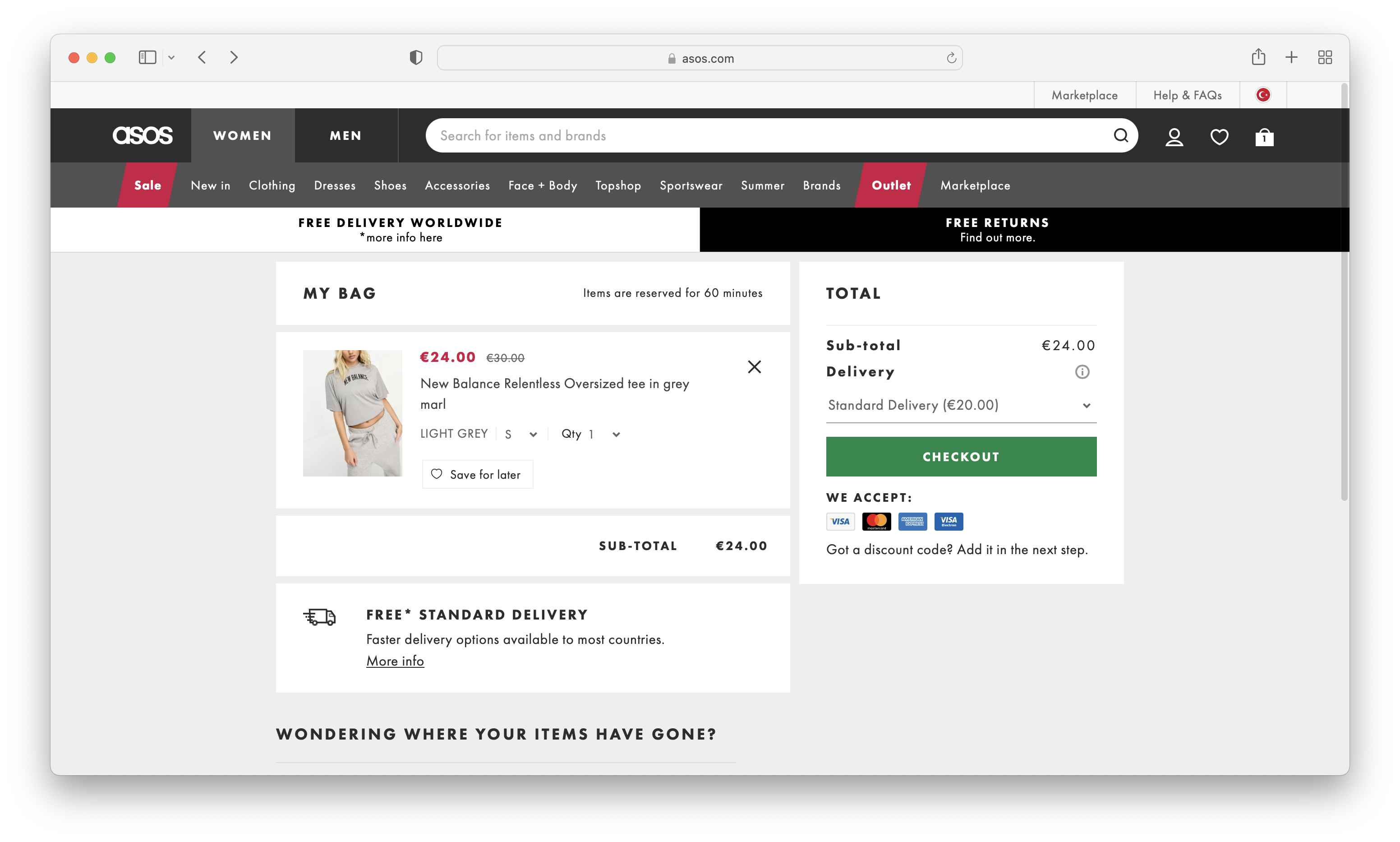
For example, brands like ASOS often offer site-wide discounts. But they also plan to offer limited-time discount codes on their best-selling items. This makes shoppers feel like they are getting something special and encourages them to buy quickly.
In the end, it’s all about how well you use these discounts and promos. Make sure shoppers can easily see and use them at checkout so they can fully understand the value and savings they’re getting.
If you offer these discounts in a thoughtful way, you can get even the most hesitant shoppers to click “buy.”
Upselling and Cross-Selling Strategies
Refining the checkout process is about more than just minimizing cart abandonment. It’s also a golden opportunity to elevate the average spend in your e-commerce store through the strategic use of cross-sells and upsells.
Cross-selling is the art of suggesting products that complement what a shopper already has in their cart.
Think of it this way: If a customer is buying a t-shirt from your store, why not introduce them to matching trousers or coordinating jewelry? This not only enhances their overall look but also boosts the order value.
Upselling, meanwhile, is about tempting the customer with a premium version of their current selection.
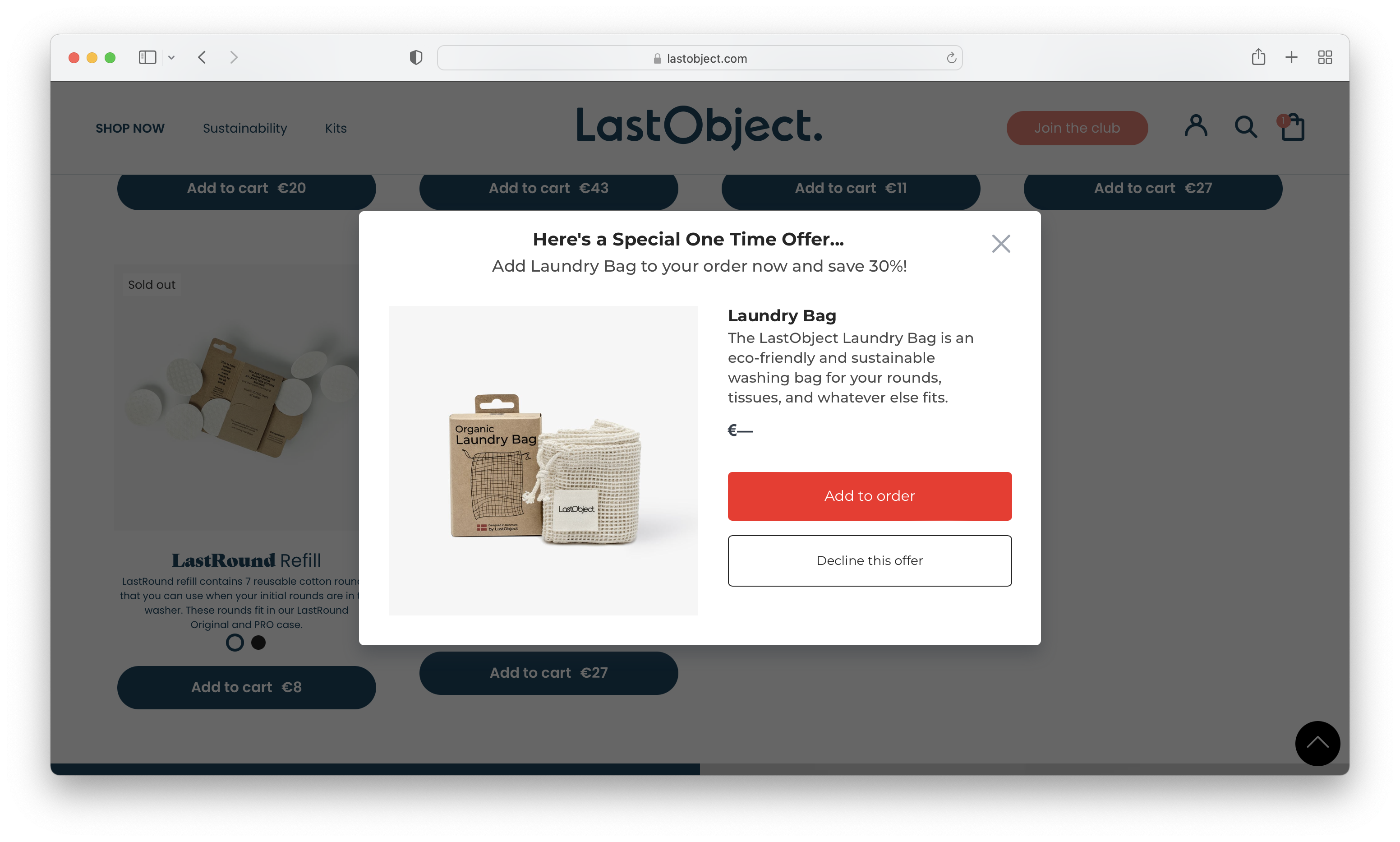
Take, for instance, LastObject, again: When a shopper adds Laundry Detergent Sheets to their cart, they’re immediately presented with a pop-up suggesting “Laundry Bag”.
This technique spotlights a higher-value option, nudging the customer towards a more lucrative purchase for your store.
The Power of Data in E-Commerce Checkout Optimization
The best way to improve checkout optimization for online shopping is to use data.
Every click, hover, and second, a user spends on a page gives valuable information about how they think, what they like, and what they might not like.
By using this information about how people act, businesses can change the checkout process to fit the needs and hesitations of their audience, making it easier for people to go from adding something to their cart to buying it.
Understanding Customer Behavior Through Analytics
Behavioral or analytical data about how users interact with an e-commerce business is one of the most powerful tools it can use.
By digging deep into this data, businesses can learn important things about;
- how customers use their websites
- what products they are most interested in
- the path they take when making a purchase
- and where they tend to stop during the checkout process
This level of detail gives you very useful information about possible roadblocks or things that might be making people hesitate during the checkout process.
Understanding these pain points is the first step to making a better user experience, whether it’s a confusing product description, a lack of product images, or just a confusing navigation path.
Also, social selling tools like Juphy enable e-commerce businesses to identify potential buyers and increase sales on their customers’ favorite platforms based on their conversational and behavioral data together.
This ability to monitor and analyze the behavior of your social audience when they visit your website gives you valuable insights into your customer’s purchase history and browsing history.
By doing all these, they can find opportunities in customer behaviors to improve their checkout process.
A/B Testing for Checkout Process Improvement
Most of the time, e-commerce businesses go wrong when they only use their instinct.
Here, the accuracy of A/B testing really shines.
By putting two versions of a page or feature next to each other, e-commerce platforms can find out which one works better for their audience in terms of engagement, user experience, or sales.
For optimizing checkout, e-commerce businesses can A/B test;
- Single-step page checkouts vs. multi-step page checkouts
- Guest checkouts vs. requiring signup
- Different call-to-action copies and designs
- Different payment methods
By constantly tweaking these parts based on real-world data, e-commerce platforms can make sure that their checkout process is easy to use, efficient, and, most importantly, effective at turning items added to carts into confirmed sales.
Juphy’s Role in E-Commerce Checkout Optimization
There are several ways you can optimize your customer checkout journey. Besides completely changing existing procedures or trying to figure out how to implement the tips provided by the guide, there are also existing tools that can smoothly assist with the required implementations. One of these tools is ‘Built for Shopify’ badged Juphy’s ChatGPT-powered Sales Agent for Shopify.
In addition to its practical one-click integration into Shopify, see for yourself how its features can help with optimizing your checkout, increase your sales, and satisfy both you and your customers:
Immediate Responses with a Personal Touch
Customers, always on the clock, crave not just quick information about their purchases but also insights tailored to their unique preferences. A constant, personalized point of contact is paramount. Juphy’s AI Agent excels here, offering not only the essential details customers seek but also personalized product recommendations that resonate with their individual shopping behaviors. Available 24/7—even on holidays—Juphy ensures every interaction makes customers feel both valued and understood, enhancing their shopping experience and satisfaction.


Simplify Decision-Making
Juphy’s AI analyzes customer behavior to suggest products that are more likely to be of interest, reducing the time customers spend deciding what to buy. This streamlined decision-making process can decrease cart abandonment rates and expedite the checkout flow.
Build Customer Confidence
By answering questions in real-time and providing personalized recommendations, Juphy helps in building a layer of confidence among customers about their purchase decisions. This trust is crucial, especially when customers are hesitant about the final click to purchase.
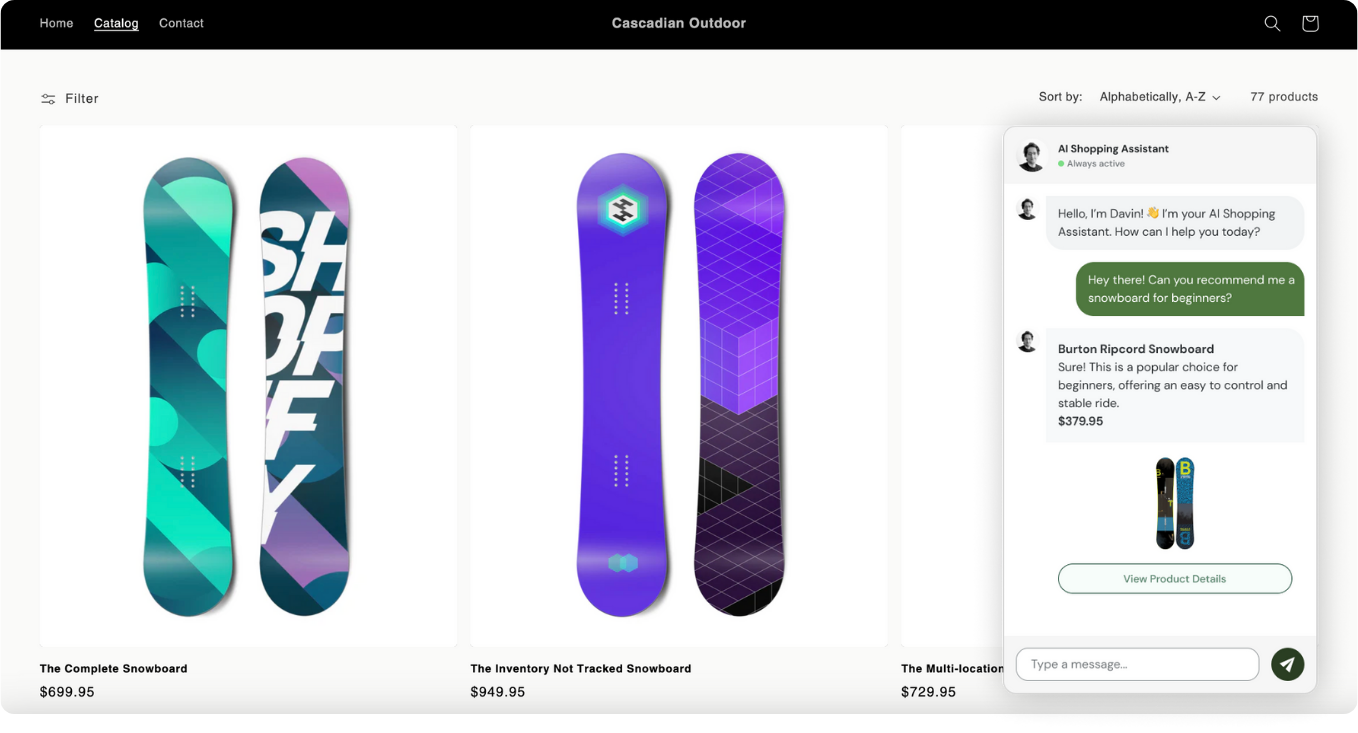
Minimize Checkout Friction
Juphy can identify common queries and concerns that customers have during the checkout process and address them proactively. Whether it’s clarifying shipping policies or explaining payment options, Juphy ensures customers have all the information they need without leaving the checkout page, thus minimizing potential friction points.
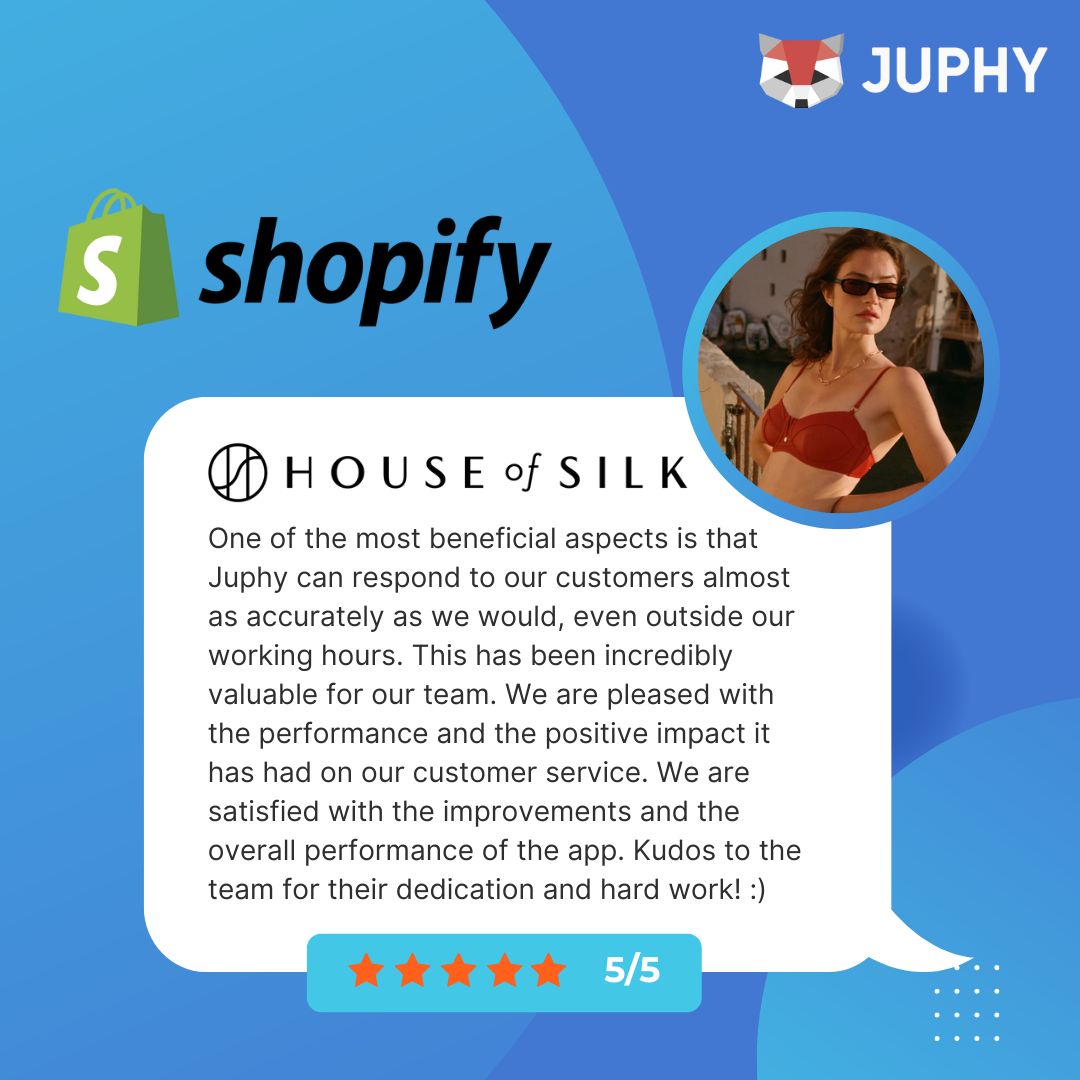
Incorporating Juphy into the e-commerce checkout process not only enhances customer engagement and satisfaction but also addresses critical aspects of the online shopping experience, from simplifying decision-making to securing transactions. Juphy’s comprehensive approach to checkout optimization ensures that customers enjoy a smooth, personalized, and trustworthy journey from cart to completion. You can try it for free today and take advantage of Juphy’s features in your business – directly from the Shopify dashboard.
Conclusion: Your Path to E-Commerce Checkout Optimization
The world of e-commerce is always changing, and the checkout process is one of the most important parts of a business’s success.
E-commerce checkout optimization is, at its core, a dynamic mix of design, strategy, and insights from data. When businesses take this route, they not only improve their customers’ experiences but also get a higher return on investment (ROI), which helps their brand grow in the competitive e-commerce market.

